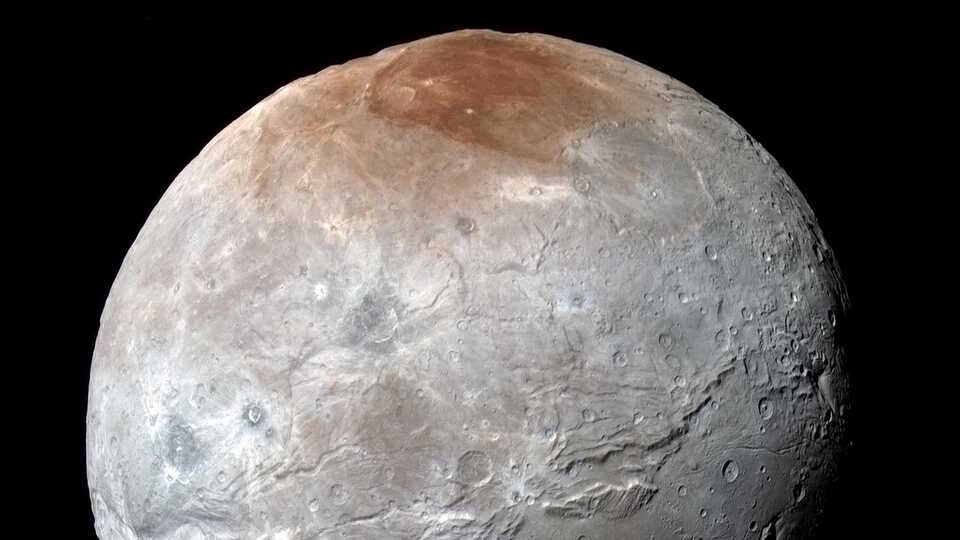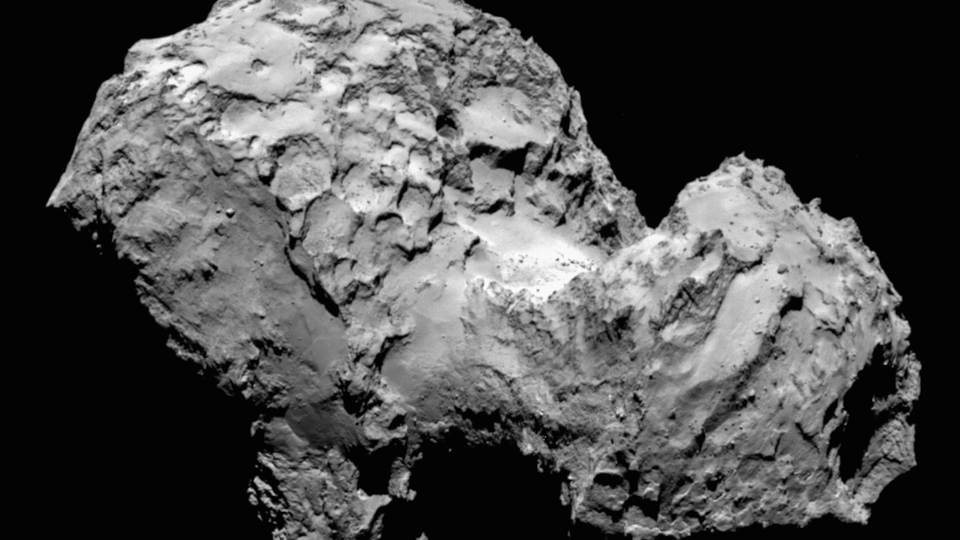Science News
Space Friday: Briny Mars, Combo Comet, and Charon
Liquid Water on Mars
On Monday, September 28, NASA announced the best evidence to date for the existence of liquid water on present-day Mars. As reported in Nature Geoscience, the announcement relied on analysis of curious features called “Recurring Slope Lineae” (RSL), first seen in 2010 by the Mars Reconnaissance Orbiter (MRO). In high-resolution imagery of four locations on Mars, these appear as dark, transient streaks on the sunward slopes inside several deep craters. They appear in late spring and disappear in the fall, suggesting a liquid flow during warmer seasons. (Similar evidence of flowing water, in the form of deeper, sinuous gullies, was observed in 2000 by Mars Global Surveyor, only those features appear to form in winter, most likely due to a different process.)
Some scientists quickly concluded that the fluid involved in the formation of these structures is water, while others suggested carbon dioxide frost. Analyzing the lineae, scientists detected the spectroscopic signature of hydrated salts (minerals containing molecular water) in concentrations that correspond to the higher number of lineae seen during the Martian summer. This indicates that water was involved at least in RSL formation and that this process is still going on now, as you read this article! Where the water comes from—whether it percolates up from the ground or is absorbed directly from the atmosphere—is not certain.
Scientists have spent a long time carefully building the case for water on Mars. Based on photographic, geological, and mineralogical evidence, researchers have established that Mars did indeed possess a large ocean and winding rivers in the Red Planet’s distant past, when its atmosphere was denser. Something happened on a global scale, thinning the atmosphere enough that it could no longer support water in a liquid state. The new findings confirm suspicions that not all of the water disappeared, persisting in liquid form in some places.
We’re not talking about babbling brooks or flowing streams—the water-transfer mechanism being described is more akin to seepage, as through a sponge. This water is very briny, laden with mineral salts, which lowers the freezing point of the water and allows it to exist in a liquid state at Martian temperatures around –10℉(–23℃) and at atmospheric pressures one percent that of Earth’s. The salts most consistent with the spectral absorption features detected by MRO are varieties of perchlorate, which is toxic and corrosive, so this certainly isn’t drinkable water. Perchlorate was also detected by NASA’s Phoenix lander and Curiosity rover. Perhaps the mineral mix is different in other areas of the planet.
Neither the Curiosity nor Opportunity rovers are close enough to visit one of the known lineae—Curiosity is about 30 miles (50 kilometers) away—and NASA’s Office of Planetary Protection has very strict protocols that forbid it, since neither rover was sterilized enough to explore sensitive locations where water or life may exist. However encouraging this week’s news, there’s a long way to go from this announcement to declaring that life has been found or that life is even possible on the surface of Mars. –Bing Quock
Comet Combo
Just over a year ago, in August 2014, the European Space Agency’s Rosetta spacecraft matched the speed of comet 67P/Churyumov-Gerasimenko—a mere 84,000 miles (135,000 kilometers) per hour—and became the first human-made object to orbit a comet.
Comets are in many ways the last frontier of exploration of our solar system, and they hold clues to the origins of the formation of the planets, including Earth. The Rosetta spacecraft has discovered that comet 67P is actually made of two objects smushed together, which accounts for its barbell-like appearance. Using infrared cameras that can resolve an object ten centimeters across, Rosetta saw two identical sets of strata on each lobe of the comet. This means that the two parts formed independently before they merged in a low-speed collision—perhaps billions of years ago. –Dan Brady
Charming Charon
The steady stream of images continues to flow from the New Horizons spacecraft after its mid-July encounter with Pluto. This week, NASA released stunning images of Pluto’s giant moon, Charon.
It turns out that even in the outer reaches of the Solar System, surprisingly complex processes are at work. On this tiny world, about half the diameter of Pluto, New Horizons imaged a colorful landscape with mountains, canyons, and evidence of landslides.
“We thought the probability of seeing such interesting features on this satellite of a world at the far edge of our solar system was low,” said Ross Beyer, of the SETI Institute and NASA Ames Research Center. “But I couldn't be more delighted with what we see!”
A canyon system that stretches at least a thousand miles (1,600 kilometers) across the moon’s surface? A vast, smooth plain, relatively free of craters—that could have formed during an epoch of cryovolcanism? Those are just two of the features on Charon that have scientists excited about what the next batch of New Horizons data will bring.
“I predict Charon’s story will become even more amazing!” says Hal Weaver, of the Johns Hopkins University Applied Physics Laboratory. –Ryan Wyatt
Image(s): NASA/JHUAPL/SwRI; ESA/Rosetta/MPS for OSIRIS Team MPS/UPD/LAM/IAA/SSO/INTA/UPM/DASP/IDA

